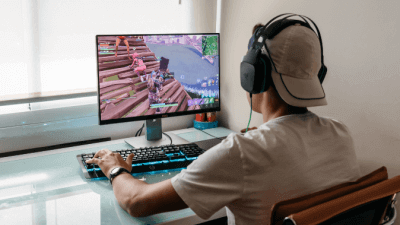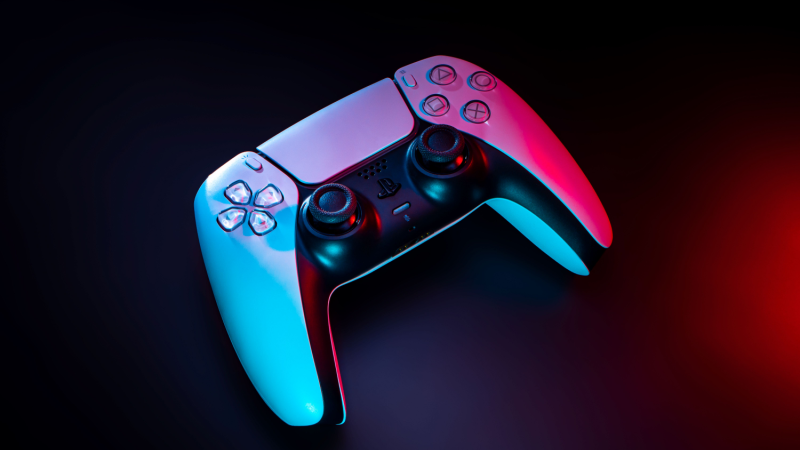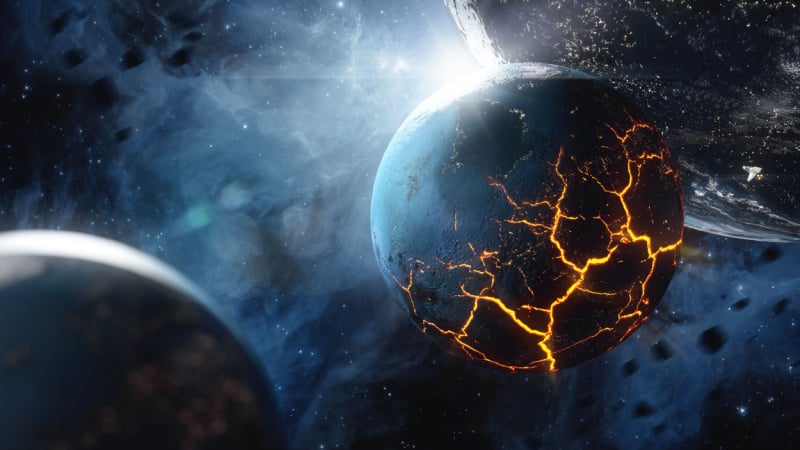What are NFTs and How do Blockchain Games Work?

Table of Contents
What Even is Non-Fungible
For those who have had any, and I mean any, exposure to the internet in the last year or so, they’ve heard the acronym NFT come up. Usually in the context of, NFT art, NFT games, why did someone spend two million dollars on an NFT tweet, or probably most often, what the hell is an NFT?
NFT stands for non-fungible token but that phrase isn’t easy to parse. To begin, it’ll be useful to figure out what fungible means in this context. The word “fungible” just means replaceable, a good example of fungibility is money, if a person lends someone a $100 note, it doesn’t matter if they’re repaid with a different $100 note, or a combination of $5s and $20s, as they are equivalent and substitutable. It doesn’t matter which $100 you own, so long as you own $100.
In the same sense, financial instruments are also fungible. It’s of no substance to investors which Google stock they own, so long as the class of the stock is the same, they are all replaceable in function and equal in value.
Gold is also a fungible good, although with some caveats, one pound of gold is one pound of gold, it matters not at all whether it comes in sixteen one-ounce bars or two eight-ounce bars, the end result is the same.
Something that is non-fungible then, is the opposite. It is irreplaceable, identifiable, and unique. As I mentioned, gold is usually fungible, but when given some form of enumeration, either a marking, number, or serial than it is no longer fungible, as it becomes possible to distinguish between two different quantities of gold, and one may be more valuable than another, with considerations paid to its provenance, or contractual details, some bars of gold have bankruptcy protection, for example.
To illustrate this, let’s say you took a vacation to Chile, went on a pleasant afternoon hike, and saw a crack in a stone. Curiosity piqued you shone your iPhone light through and saw a chamber filled with gold coins marked “F. Drake.” First, congratulations because you just found Francis Drake’s lost treasure. But second, and more importantly, you’ve also found a wonderful illustration of non-fungibility.
The gold you just discovered is worth more than an equivalent amount of the same gold, given its distinguishing qualities. This gold is unique, from a lost treasure, and it has a value beyond just the commodity price: collectability and non-fungibility.
Non-Fungible Tokens on a Fungible Internet
The property of non-fungibility is, to no one’s surprise, important when it comes to understanding non-fungible tokens. On a technical level, NFTs are strings of code on a blockchain, typically Ethereum, which contain data providing for the ownership of something (and in the broadest sense of the word). This string of code is unique and verifiable. They are transferable to others but, crucially, not replaceable since every NFT is like Francis Drake’s gold you found earlier, specifically identifiable.
To simplify it, think of NFTs as a deed to a property, when you buy an NFT of a Tweet, you’re provided the deed to it, with the underlying asset being not a house, but the Tweet itself. They are a receipt which makes identifiable, digital assets, which are traditionally fungible.
Taking the example from earlier, a Tweet without an NFT attached to it is similar to a bar of gold, it doesn’t matter where you see it, who retweeted it, so long as it’s the same Tweet, they are of equal function and can be substituted for one another.
Once an NFT of a Tweet exists, however, you’ve added Francis Drake’s initials to the gold, it becomes identifiable and irreplaceable. The underlying Tweet can still be shared, but they’re not the original one, with the corresponding NFT attached to it, which is unique, and no version of that Tweet exists, which you would now own.
And could look at knowing while it looks identical to other versions of this Tweet, it’s special and more importantly, you are special. The person who bought Jack Dorsey’s Tweet for 2.2 million dollars, certainly feels that way.
Buying an NFT of this clipart rock, for example, might cost you anywhere from $40,00 to $100,000. What this money gets you is a token proving ownership of the clipart. It turns an MS Paint rock from something that is infinitely replaceable to an object with scarcity.
Sure, someone can right click, save image as, and get an identical picture of the rock, but only one person owns the picture, giving their version non-fungibility, uniqueness and tradable value.
Fungible, Fungible, Fungible
If this all sounds a bit silly, and semantic well, that’s because it is… to an extent. NFTs are most commonly used in the art world because art has had its own version of non-fungible tokens for hundreds of years. All original art, at least for collecting purposes, function as NFTs. Art’s dollar value, and this is going to make art fine art majors angry, doesn’t come from the color and tone, or the painters technique, or the subject and themes. If that were true, an identical reproduction of a Monet would be of the same value as the original, but it isn’t and never has nor will be.
Art’s value comes from the underlying painting, the notion that it is the original, that there is something non-fungible about it. An original painting functions as a token, a reproduction of a painting, even if it were identical, is not the original, and it is not unique. Only the original is, in that verifiable, historical, and elemental sense of the word.
That being said, if it’s fair to think that owning a clipart rock is comparable to possessing the original Persistence of Memory, or Las Meninas, is questionable, but the value generating framework behind NFTs and fine art is identical, heretical as that might be to gallery curators.
Non-Fungible Tokens in Games
Having read this far, how NFTs might function in games should be a bit clearer to you. In NFT games, such as Axie Infinity, God’s Unchained, Splinterlands, instead of your character owning an ingame item or character, you are presented with a token of ownership which is sent to the Ethereum blockchain. In effect, you own the item, as opposed to it just being an abstraction of ownership in the game.
NFTs in games are a way for players to have more control over an in-game economy, being able to directly trade with one another or convert an item into fiat currencies more easily. If you loot something in an NFT game, you are presented a receipt of ownership of that item, giving it an element of uniqueness and irreplaceability, beyond the scarcity that already exists in a game. Instead of owning identical Iron Swords, each player owns a unique, and get ready for the word again, non-fungible, one.
How this might affect gaming is unclear, as players have been able to trade in game, or use third-party marketplaces for decades now and items within a restrictive game world are by their nature less fungible than a Tweet or a clipart rock. If you own the Twin-Blades of Azzinoth, for example, odds are high you are one of four or five people on your World of Warcraft server who does. Sure, the various versions of the weapon are interchangeable, but the item itself is extremely scarce and games have never had an issue creating scarcity to motivate players and presenting tokens of ownership doesn’t seem like it will change that.
That being said, it is easy to see the appeal of feeling like things you earn in a game have a direct, real-world, parallel. Looting an item and then seeing the ownership receipt in your Blockchain wallet has an undeniable appeal, giving players the sense that things in the game are tangible.
And One Last Time for the People in the Back:
Fungible.















